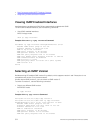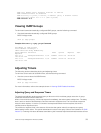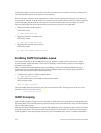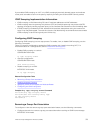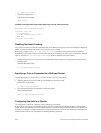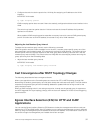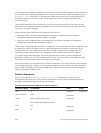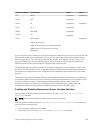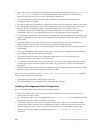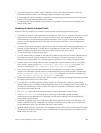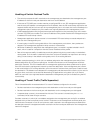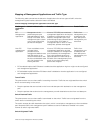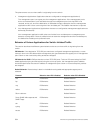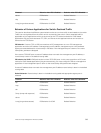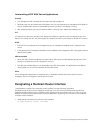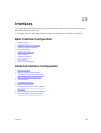• Applications can be configured or unconfigured as management applications using the application
or no application command. All configured applications are considered as management
applications and the rest of them as non-management applications.
• All the management routes (connected, static and default) are duplicated and added to the
management EIS routing table.
• Any new management route added is installed to both the EIS routing table and default routing table.
• For management applications, route lookup is preferentially done in the management EIS routing
table for all traffic. management port is the preferred egress port. For example, if SSH is a
management application, an SSH session to a front-panel port IP on the peer box is initiated via
management port only, if the management port is UP and management route is available.
• If SSH request is received on the management port destined to the management port IP address, the
response to the request is sent out of the management port by performing a route lookup in the EIS
routing table
• If the SSH request is received on the front-end port destined for the front-end IP address, the
response traffic is sent by doing a route lookup in the default routing table only.
• If the management port is down or route lookup fails in the management EIS routing table, packets
are dropped.
• For all non-management applications, traffic exits out of either front-end data port or management
port based on route lookup in default routing table.
• Ping and traceroute are always non-management applications and route lookup for these
applications is done in the default routing table only.
• For ping and traceroute utilities that are initiated from the switch, if reachability needs to be tested
through routes in the management EIS routing table, you must configure ICMP as a management
application.
• If ping and traceroute are destined to the management port IP address, the response traffic for these
packets is sent by doing route lookup in the EIS routing table.
When the feature is disabled using the no management egress-interface-selection command,
the following operations are performed:
• All management application configuration is removed.
• All routes installed in the management EIS routing table are removed.
Handling of Management Route Configuration
When the EIS feature is enabled, the following processing occurs:
• All existing management routes (connected, static and default) are duplicated and added to the
management EIS routing table.
• Any management static route newly added using the management route CLI is installed to both the
management EIS routing table and default routing table.
• As per existing behavior, for routes in the default routing table, conflicting front-end port routes if
configured has higher precedence over management routes. So there can be scenarios where the
same management route is present in the EIS routing table but not in the default routing table.
• Routes in the EIS routing table are displayed using the show ip management-eis-route
command.
380
Internet Group Management Protocol (IGMP)



